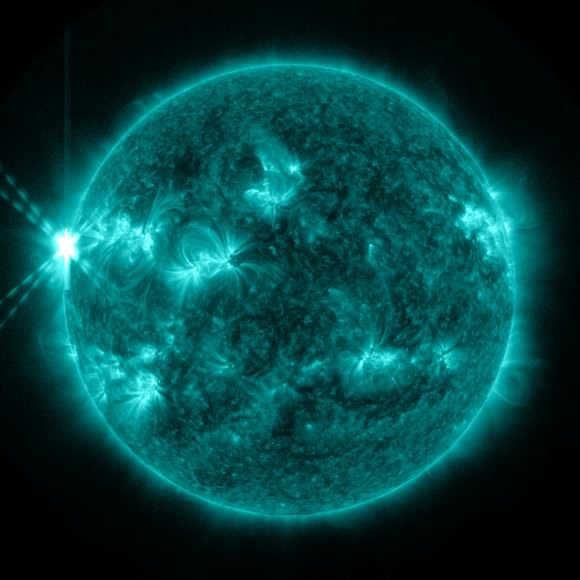The Sun gets active! On May 12, 2013, the Sun emitted what NASA called a “significant” solar flare, classified as an X1.7, making it the first X-class flare of 2013. Then earlier today, May 13, 2013, the Sun let loose with an even stronger flare, an X2.8-class. Both flares took place just beyond the limb of the Sun, and were also associated with another solar phenomenon, a coronal mass ejection (CME) which sent solar material out into space.
Neither CME was Earth-directed, and according to SpaceWeather.com, no planets were in the line of fire. However, the CMEs appear to be on course to hit NASA’s Epoxi, STEREO-B and Spitzer spacecraft on May 15-16. NASA said their mission operators have been notified, and if warranted, operators can put spacecraft into safe mode to protect the instruments. Experimental NASA research models show that the CMEs were traveling at about 1,930 km/second (1,200 miles per second) when they left the Sun.
The sunspot associated with these flares is just coming into view, and the next 24 to 48 hours should reveal much about the sunspot, including its size, magnetic complexity, and potential for future flares.
See more images and video below:
Both the X1.7 and the X2.8-class solar flare, plus a prominence eruption, all in one video:

NASA’s Solar Dynamics Observatory (SDO) captured this X1 flare (largest of the year so far) in extreme UV light:


There is a typo in the first sentence of the second paragraph.
“Neither CME was not Earth-directed, and according to SpaceWeather.com, no planets were in the line of fire.”
I believe the word “not” should not be in this sentence.
Thanks! Fixed.